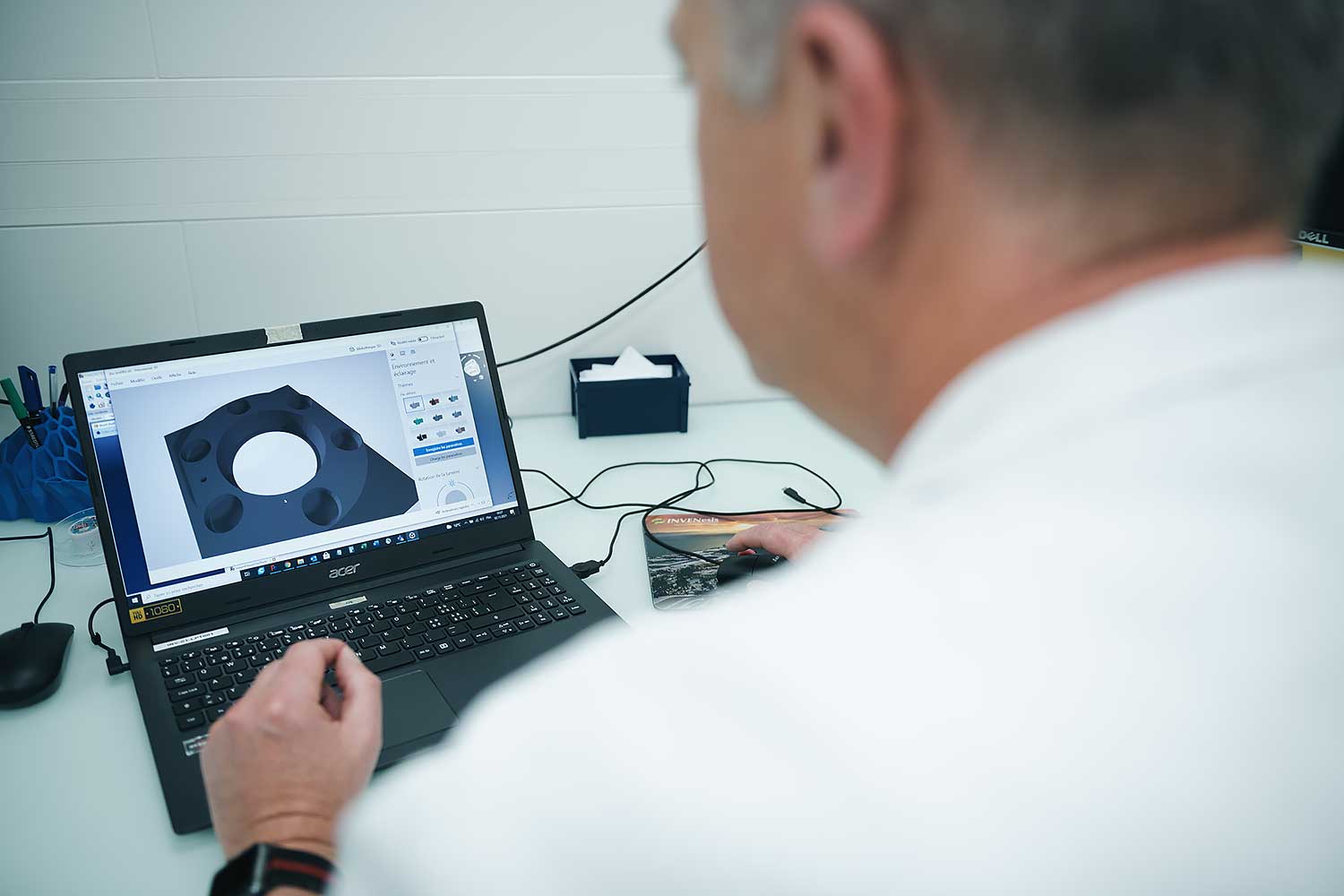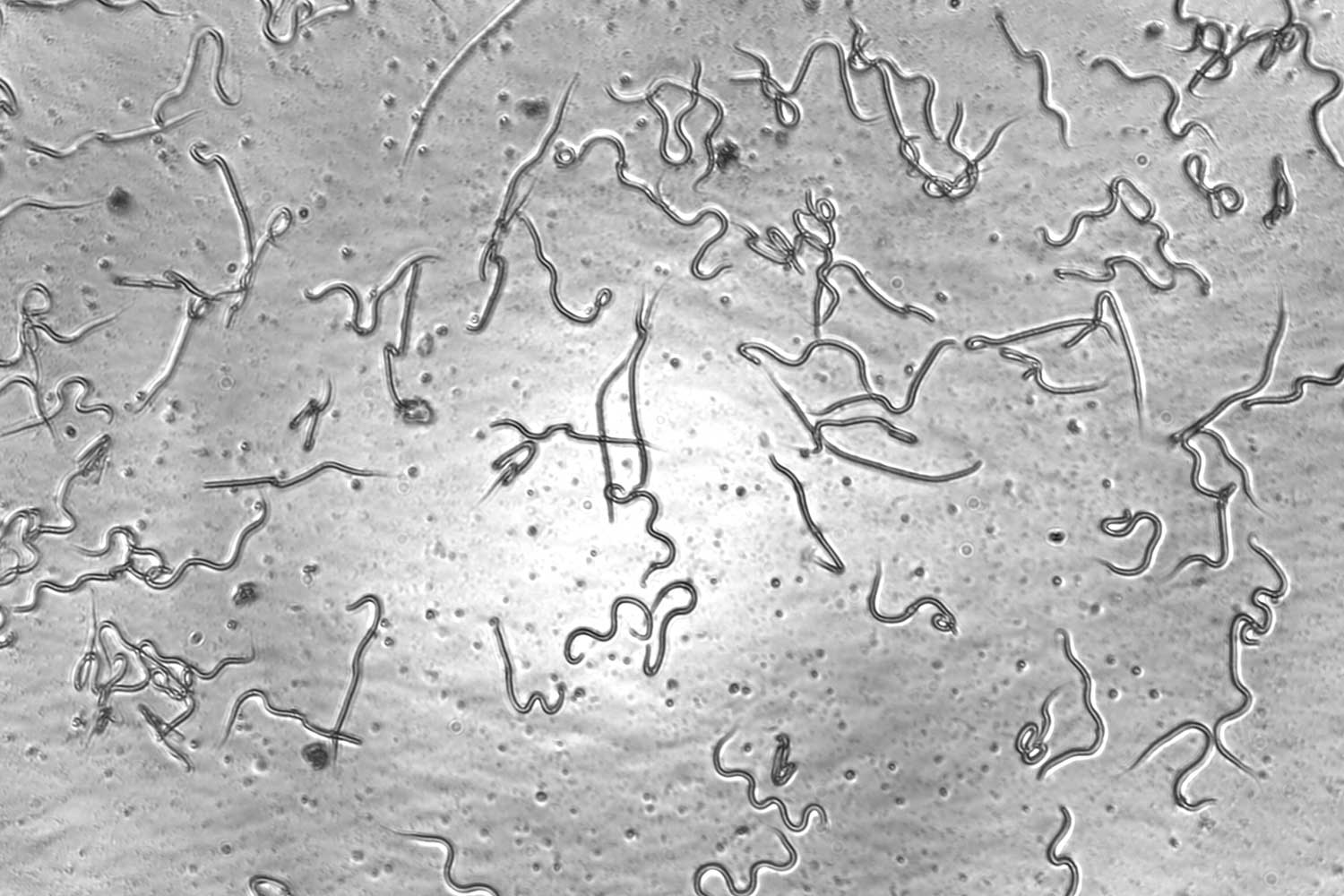3D – printing:
Need to quickly turn your idea into reality or acquire a specific material for your experiment?
3D printing is revolutionizing the way we approach science and has brought countless benefits to our assays. It allows us to swiftly and effectively tackle new challenges. Why not let it do the same for your projects?
Migration Trap Assay:
CSEM and Invenesis have developed an innovative, standardized migration trap assay (MTA) for parasitic nematodes enabling high throughput in vitro drug screening.
Elaborated in collaboration with INRAE, France, the principle relies on a specific trap maze to assess the behavioral phenotype of worms in response to compounds. The 96-well plate is fabricated using injection molding and is optimized for microscopy reading.
In response to the increased emergence of multi-resistant parasite strains, this unique assay can revolutionize the screening of anthelmintics for human and animal health worldwide.
Key features:
See our latest publications on the principles of the MTA and its recent applications in research campaigns.
See our assay catalog to find out more.
Whiteflies:
The silver leaf whitefly Bemisia tabaci is a small sap-sucking insect considered as a serious threat for crops worldwide. It attacks a wide range of plant species including vegetables, ornamental plants and cotton, causing direct damage by feeding on plant sap and indirectly by transmitting plant viruses.
The whitefly also produces large amounts of honeydew, which can lead to the growth of sooty mold, further weakening the plant. Control measures mostly consist of applying insecticides but despite these efforts, B. tabaci populations have developed high resistance rates, making it difficult to control.
Invenesis takes its part in the research of new means with the recent development of repellent tests (with or without choice) and contact assays for identifying novel repellent and/or insecticide actives.
See our assay catalog to find out more.
Filarial parasites
The dog filarial nematode, also known as Dirofilaria immitis, is a parasitic worm that causes heartworm disease in dogs.
It is transmitted to the animals through the bite of infected mosquitoes. The adult worms reside in the heart and blood vessels, causing serious damage to the cardiac and respiratory systems over time. Early detection and treatment are crucial, as the disease can be fatal if left untreated. Preventative measures consist in providing monthly preventative medication and reducing exposure to mosquitoes.
The search of novel control methods is a central aspect of Animal Health research and a challenge that Invenesis is now committed in.
Recently, we have been keen to propose three model species of filariae: the dog heartworm D. immitis, and the rodent filarial nematodes Litosomoides sigmodontis and Acanthocheilonema viteae, for which certain stages of development are accessible for research campaigns on potential candidate treatments.
Custom made repellent assays
Fleas (choice assay)
Because the development of repellents extends beyond flying insects, our team has simplified the many varied flea tests found in the literature, creating a versatile test that can be applied to any compound or natural extract.
Using 3D printing, the test offers adult fleas the choice to move between a treated area and a control area, and their movements are recorded over time to provide an accurate assessment of the repellency rate.
See our assay catalog to find out more.
Ticks (horizontal glass plate)
Ongoing research into tick repellents has led to the development of new and innovative methods for evaluating the efficacy of potential candidates.
Our contribution to this field involves enhancing existing processes to provide more precise and visually informative estimates of a repellent’s activity. To achieve this, we have developed a new protocol that involves applying natural compounds or products to the center of a glass plate and observing the behavior of adult ticks or nymphs under the influence of the treatment.
Our method employs cutting-edge tracking technology, allowing for accurate and detailed recording of tick behavior, thus enabling us to evaluate any deterrent or repellent effect of the treatment with greater accuracy than ever before.
See our assay catalog to find out more.
Tick adult feeding
No choice assay on multiple hard tick species
Our tick adult feeding assay (INV-T-049) was recently developed and relies on an artificial feeding system using a 3D-printed design. This test proves to be particularly effective on key species such as I. ricinus, Amblyomma americanum, Dermacentor variabilis, and Rhipicephalus sanguineus. It is specifically used to evaluate the efficacy of compounds on survival, as well as on the processes of feces production and engorgement after a minimum treatment period of 72 hours.

See our assay catalog to find out more.










